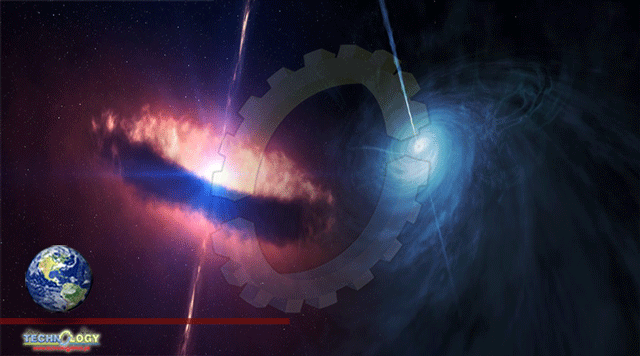Even the most supermassive of the supermassive black holes aren’t very large, making it extremely difficult to measure their sizes. However, astronomers have recently developed a new technique that can estimate the mass of a black hole based on the movement of hot gas around them – even when the black hole itself it smaller than a single pixel.

Supermassive black holes are surrounded by tons of superheated plasma. That plasma swirls around the back hole, forming a torus and an accretion disk that continually feeds material into the black hole. Because of the extreme gravity, that gas moves incredibly quickly and shines fiercely. It’s that light that we identify as a quasar, which can be seen from across the universe.
While the quasars are relatively easy to spot, it’s much more challenging to quantify the properties of the central black hole. Now Felix Bosco, in close collaboration with Jörg-Uwe Pott, both from the Max Planck Institute for Astronomy (MPIA) in Heidelberg, and former MPIA researchers Jonathan Stern (now Tel Aviv University, Israel) and Joseph Hennawi (now UC Santa Barbara; USA and Leiden University, the Netherlands), has succeeded for the first time in demonstrating the feasibility of directly determining the mass of a quasar using a technique called spectroastrometry.
Spectroastrometry relies on observing the area around the black hole. As the gas swirls around it, some of it will be moving in our direction and some if it will be moving away. The portion of the gas moving towards us will be blue-shifted, and the portion moving away will shift more red. Even if the central black hole and accretion disk are too small to resolve, the technique can still be applied to regions further away, and through modeling the researchers can estimate a mass.
“By separating spectral and spatial information in the collected light, as well as by statistically modeling the measured data, we can derive distances of much less than one image pixel from the centre of the accretion disk,” explained Bosco.
The team successfully applied this technique to J2123-0050, a quasar active when the universe was just 2.9 billion years old. They found that the central black hole weighed 1.8 billion solar masses. Taking this technique to the next level and targeting the earliest quasars, however, will require some new telescopes.
Joe Hennawi adds, “With the significantly increased sensitivity of the James Webb Space Telescope (JWST) and the Extremely Large Telescope (ELT, with a primary mirror diameter of 39 meters) currently under construction, we will soon be able to determine quasar masses at the highest redshifts.” Jörg-Uwe Pott, who also leads the Heidelberg contributions to ELT’s first near-infrared camera, MICADO, adds, “The feasibility study now published helps us to define and prepare our planned ELT research programs.”
Originally published by Universe Today